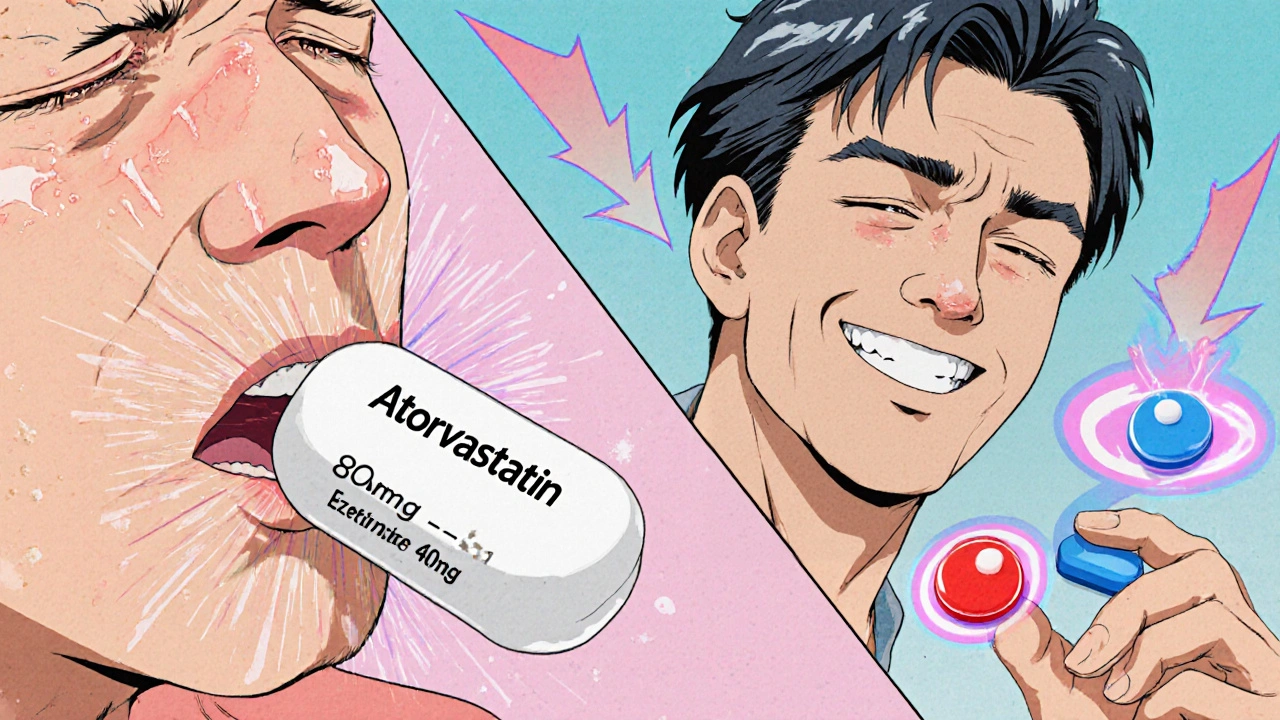Ezetimibe and Statin: How They Work Together to Lower Cholesterol
When you’re managing high cholesterol, ezetimibe and statin, a combination of two cholesterol-lowering drugs that target different pathways in the body. Also known as dual lipid therapy, it’s one of the most common and effective approaches for people who need more than a statin alone can deliver. Statins, like atorvastatin or rosuvastatin, block cholesterol production in the liver. Ezetimibe, on the other hand, stops your gut from absorbing cholesterol from food. Together, they hit cholesterol from two sides—something neither drug can do alone.
This combo isn’t just for people who don’t respond to statins. It’s also used by those who can’t take high doses of statins due to muscle pain or liver concerns. Studies show that adding ezetimibe to a statin can drop LDL (bad cholesterol) by another 15–20% on top of what the statin already does. That’s not a small gain—it’s the difference between staying at risk and reducing your chance of a heart attack or stroke. The statin therapy, a cornerstone treatment for preventing cardiovascular disease by reducing LDL cholesterol works best when paired with lifestyle changes, but for many, that’s not enough. That’s where ezetimibe, a cholesterol absorption inhibitor that reduces dietary and biliary cholesterol uptake in the small intestine steps in. It’s gentle, taken as a daily pill, and doesn’t cause the muscle issues that sometimes come with high-dose statins.
Not everyone needs this combo. If your LDL is only slightly above target and you’re young and healthy, a statin alone might be enough. But if you’ve had a heart event, have diabetes, or your cholesterol stays stubbornly high despite a statin, this pair is often the next logical step. Doctors also turn to it when patients can’t tolerate higher statin doses. The side effects of ezetimibe are mild—mostly just stomach upset or fatigue—and it rarely interacts with other meds. That makes it a safe long-term partner for statins, even for older adults or those on multiple prescriptions.
What you won’t find in most doctor’s offices is a clear discussion about cost or generic options. Both drugs are available as generics now, making this combo one of the most affordable ways to get serious cholesterol control. You don’t need fancy injections or weekly infusions—just one pill in the morning and one at night, or a single combination tablet if your pharmacy stocks it.
The posts below dig into exactly how this combo works in real life. You’ll see comparisons with other cholesterol drugs, what blood tests to track, how to handle side effects, and why some people still struggle even with this treatment. There’s also advice on when to push for this combo, how to talk to your doctor about it, and what alternatives exist if it doesn’t work for you. Whether you’re just starting out or have been on this regimen for years, you’ll find practical, no-fluff insights here—no jargon, no marketing, just what actually matters for your health.
Combination Cholesterol Therapy with Reduced Statin Doses: A Smarter Way to Lower LDL
By Lindsey Smith On 30 Oct, 2025 Comments (14)

Combination cholesterol therapy with reduced statin doses offers a safer, more effective way to lower LDL cholesterol for high-risk patients. Learn how adding ezetimibe or other non-statin drugs can outperform high-dose statins with fewer side effects.
View More




